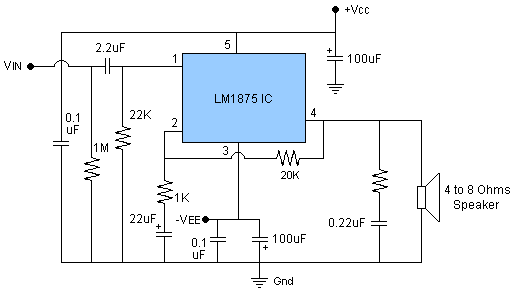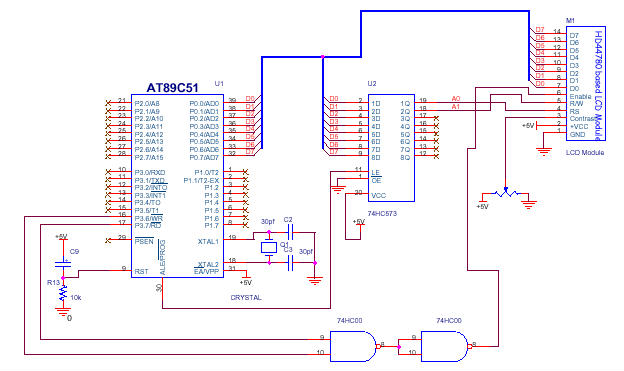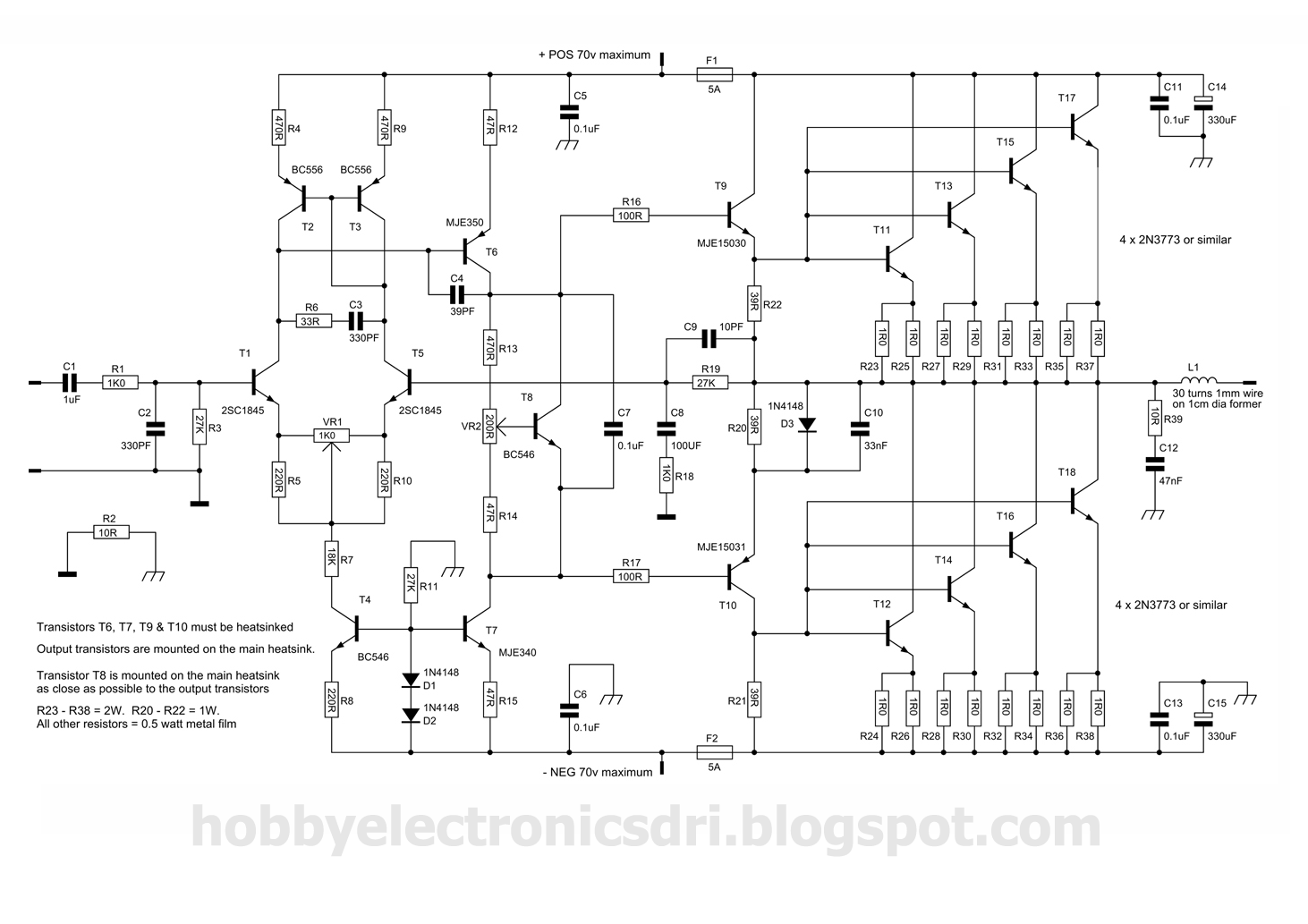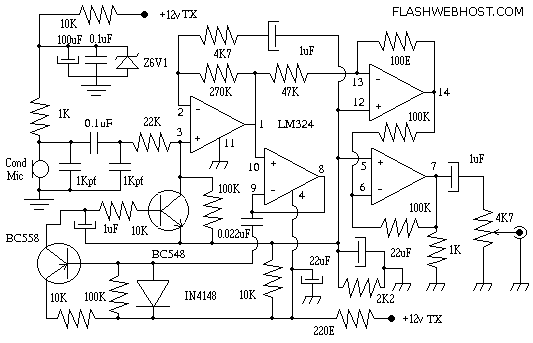
20w audio amplifier using lm1875

The circuit presented is a 20W audio amplifier utilizing the LM1875 integrated circuit (IC). The LM1875 is a high-quality, low-distortion audio amplifier IC rated for 20 watts, available in a TO-220 package. This IC includes several built-in features such as thermal shutdown, current limiting, high gain, and robust current handling capabilities, allowing it to operate over a wide range of conditions.
The 20W audio amplifier circuit is designed around the LM1875 IC, which is particularly suited for audio applications due to its low distortion characteristics. The circuit typically includes a power supply section that provides the necessary voltage and current to the LM1875. It is important to ensure that the power supply voltage is within the specified range for optimal performance.
The input stage of the amplifier often incorporates capacitive coupling to block any DC offset from the audio source, ensuring that only the AC audio signals are amplified. Resistors may be used to set the gain of the amplifier, allowing for customization based on the specific application requirements. The output stage is connected to a speaker, where the amplified audio signal is delivered.
Thermal management is crucial in this design, as the LM1875 can generate significant heat during operation. A suitable heatsink must be attached to the IC to dissipate heat effectively, preventing thermal shutdown during prolonged use. Additionally, the circuit may include bypass capacitors to filter out noise from the power supply and ensure stable operation.
The current limiter feature of the LM1875 protects against overcurrent conditions, which could potentially damage the amplifier or the connected speaker. This feature ensures that the output current remains within safe limits even during demanding audio playback.
Overall, the 20W audio amplifier circuit using the LM1875 IC is an efficient and reliable solution for audio amplification, suitable for various applications ranging from home audio systems to portable speaker designs. Proper implementation of the design guidelines will yield a high-performance audio amplifier capable of delivering quality sound with minimal distortion.Here is the circuit of 20W audio amplifier using LM1875 IC. LM1875 is a very high quality low distortion 20 Watt audio amplifer IC available in TO-220 package. This IC has many built in features like thermal shutdown, current limiter, high gain, high current capability etc. and can be operated on a wide 🔗 External reference
The 20W audio amplifier circuit is designed around the LM1875 IC, which is particularly suited for audio applications due to its low distortion characteristics. The circuit typically includes a power supply section that provides the necessary voltage and current to the LM1875. It is important to ensure that the power supply voltage is within the specified range for optimal performance.
The input stage of the amplifier often incorporates capacitive coupling to block any DC offset from the audio source, ensuring that only the AC audio signals are amplified. Resistors may be used to set the gain of the amplifier, allowing for customization based on the specific application requirements. The output stage is connected to a speaker, where the amplified audio signal is delivered.
Thermal management is crucial in this design, as the LM1875 can generate significant heat during operation. A suitable heatsink must be attached to the IC to dissipate heat effectively, preventing thermal shutdown during prolonged use. Additionally, the circuit may include bypass capacitors to filter out noise from the power supply and ensure stable operation.
The current limiter feature of the LM1875 protects against overcurrent conditions, which could potentially damage the amplifier or the connected speaker. This feature ensures that the output current remains within safe limits even during demanding audio playback.
Overall, the 20W audio amplifier circuit using the LM1875 IC is an efficient and reliable solution for audio amplification, suitable for various applications ranging from home audio systems to portable speaker designs. Proper implementation of the design guidelines will yield a high-performance audio amplifier capable of delivering quality sound with minimal distortion.Here is the circuit of 20W audio amplifier using LM1875 IC. LM1875 is a very high quality low distortion 20 Watt audio amplifer IC available in TO-220 package. This IC has many built in features like thermal shutdown, current limiter, high gain, high current capability etc. and can be operated on a wide 🔗 External reference





